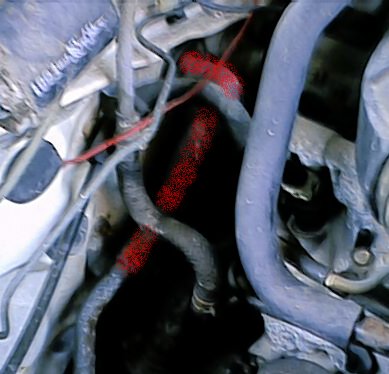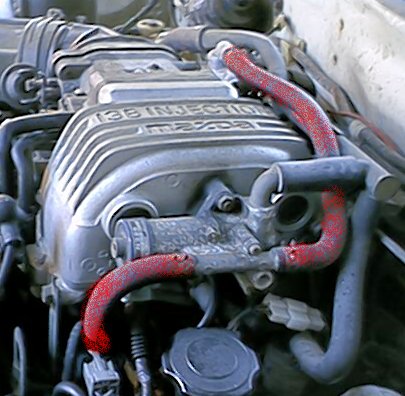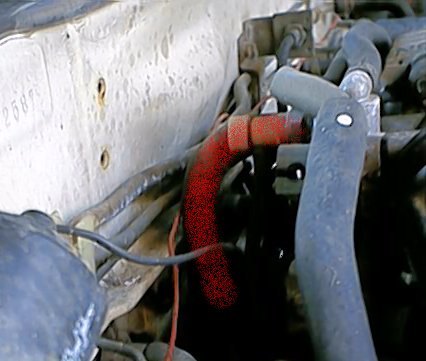| Home > RX-7 > Tech/Mods > Tech Info > HELP! I Was Driving And My Oil Buzzer Came On! |
| Home > RX-7 > Tech/Mods > Tech Info > HELP! I Was Driving And My Oil Buzzer Came On! |
This is a situation that a vast majority of RX-7 owners have, or will, experience at one time or another. If you keep your cool and don't panic, most likely everything will turn out fine.
So you're driving along, just minding your own business and suddenly that god-awful warning buzzer comes on. The first thing you do is check the idiot light cluster, and see that the coolant warning light is on. First, don't panic. As soon as it is safe to do so, pull the car off the road and turn off the engine. Before you shut the engine down, take a quick glance at the temperature gauge and note the position of the needle. You should be paying attention to this needle regardless, but in this situation it is very important. If the needle is more than 3/4 on the gauge, you may be looking at possible overheating damage. Don't worry yet, because if you got off the road and shut down the car immediately the possibility of damage is remote.
With the car safely out of traffic, open the hood and inspect all coolant hoses. If one of the hoses has burst, it may still be spraying hot coolant, so be very careful. Most commonly, the heater hose on the drivers side of the engine will burst. This is because it is right below the oil filter and oil filler cap. Oil often gets spilled on the hose, with gradually weakens it. As shown in the picture below, the most common spot this hose bursts is where it meets the engine block.

Another common problem is the upper radiator hose. This hose passes by the airbox very closely, so it is entirely possible for the airbox to wear a weak spot in the hose as it rubs. Check that hose carefully. Right below it is the lower radiator hose. This hose is not very prone to breaking, but of course anything is possible.
Coming off the lower radiator hose is the passenger side heater hose. Inspect it carefully, but it is not prone to breaking. Following that hose, you will see that it connects to a metal pipe which runs the length of the passenger engine bay. The metal pipe then connects to a rubber hose, which enters the firewall and connects to the heater core. This hose is often quite baked from exhaust heat, and has been known to fail occasionally.

There are also a set of thin coolant hoses that supply coolant to the intake manifold. You can see these hoses in the picture below, highlighted in red.

These hoses are not prone to breaking, but should be inspected as well. There is also a small hose at the passenger rear of the throttle body. It should also be checked.

Can you still not find the leak? Try squeezing on the upper rad hose to pressurize the system. If there is a leak, coolant will be forced out the hole and should be visible. If you cannot find a leak no matter what you try, it is entirely possible that the problem is only a small air bubble in the cooling system. This bubble can settle on the sensor and cause a false warning. Once the car has cooled down enough to open the rad cap, check that the level of coolant is as it should be. If it is, and the level in the overflow tank is between the "hot" and "cold" line, then replace the rad cap and start the car. Keeping a close eye on the temperature gauge, drive the car somewhere convenient and either bleed the cooling system yourself, or have a mechanic perform the task.
If you have burst a hose, have the car towed and either replace the broken hose yourself, or have a mechanic do it for you. It is very important that you do not drive the car with a coolant leak. Doing so will cause the engine to overheat, a situation that will probably require an engine rebuild to fix. Rotary engines are very sensitive to overheating, and can easily be damaged beyond simple repairs. For more information above overheating, see I Just Overheated My Car. What Now?.
Back To Tech Page | Mail Me | Search | ![]()